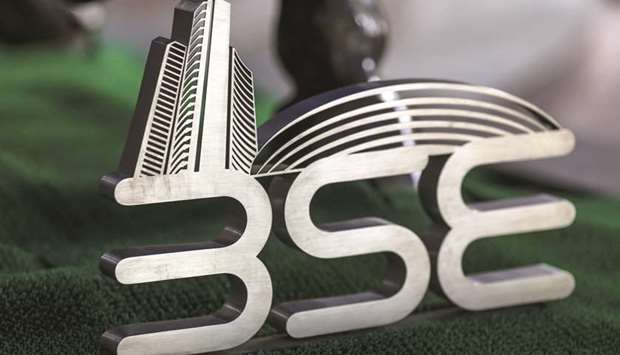The BSE Sensex and the NSE’s Nifty 50 erased early gains and turned negative yesterday. Both the indices declined for the third straight day yesterday, mainly due to heavy losses in finance stocks such as HDFC.
Shares of asset management companies HDFC AMC and Reliance Nippon AMC fell up to 12% after market regulator Sebi cut the total expense ratio on mutual fund schemes.
FIIs sold equities worth Rs 1,143.73 crore on a net basis on Tuesday, while DIIs purchased shares worth Rs 264.66 crore, provisional data showed.
In global markets, European shares advanced, tracking gains in their Asian peers, despite the US-China trade war deepening. Oil prices rose after Saudi Arabia expressed comfort with Brent prices rising above $80 a barrel.
The BSE Sensex closed lower by 169.45 points, or 0.45%, at 37,121.22, while the Nifty 50 fell 42.55 points, or 0.38%, to close at 11,236.35. The BSE MidCap and SmallCap fell 0.72% and 0.98%, respectively.
Among the BSE sectoral indices, metal, oil and gas, basic materials and IT gained, while FMCG, finance, realty and consumer durables declined.Shares of HDFC group companies led losses as the HDFC AMC stock fell over 8% after Sebi on Tuesday cut the total expense ratio on mutual fund schemes.
HDFC fell 1.35% and HDFC Bank was down 1.58%.Coal India, ONGC, Tata Steel and GAIL were among the top gainers, while IndusInd Bank, Maruti, Yes Bank and Bharti Airtel were among the major losers.
Meanwhile the Indian rupee rallied the most in almost four months following a ET Now television channel report that the central bank is studying a possibility of allowing oil companies to purchase dollars directly from it instead of market. Sovereign bonds also advanced, tracking gains in the currency.
The currency gained 0.8%, the biggest since May 25, to close at 72.37 per dollar yesterday, after rising as much 0.9% following the news report about Reserve Bank of India selling dollars directly to oil companies.
The rupee declined 1.5% in the two days to Tuesday as measures announced by the government late Friday were deemed insufficient to curb the declines in Asia’s worst-performing currency.
“This move, if it happens, will take the pressure off the rupee,” said Paresh Nayar, the Mumbai-based head of currency and money markets at FirstRand. “Now, the market participants will be eagerly looking forward to the actual announcement and also curbs on non-essential imports to reduce the current account deficit.”
The rupee has declined about 12% this year in Asia’s worst performance as an emerging-market rout raises investor scrutiny of countries with worsening balance of payments.
On Tuesday, the rupee touched an all-time low of 72.97 to a dollar as crude oil surged amid concerns about Iranian supply and a report that Saudi Arabia was comfortable with Brent prices above $80 a barrel.
The 10-year gilt yield closed at 8.072% yesterday, below its previous close of 8.14%. Bond yields and prices move in opposite directions
The rupee has weakened 12.2% in 2018, and foreign investors have sold $771.30mn and $6.48bn in the equity and debt markets, respectively.

SENSEX
